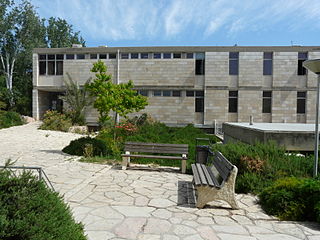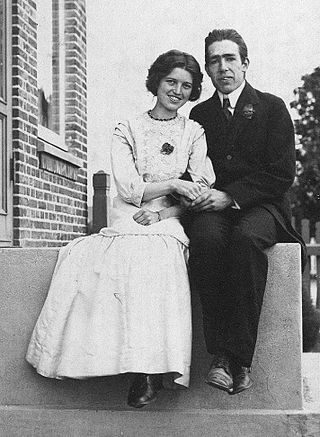
Aage Niels Bohr was a Danish nuclear physicist who shared the Nobel Prize in Physics in 1975 with Ben Roy Mottelson and James Rainwater "for the discovery of the connection between collective motion and particle motion in atomic nuclei and the development of the theory of the structure of the atomic nucleus based on this connection". His father was Niels Bohr.

Niels Henrik David Bohr was a Danish physicist who made foundational contributions to understanding atomic structure and quantum theory, for which he received the Nobel Prize in Physics in 1922. Bohr was also a philosopher and a promoter of scientific research.
Igor Dmitriyevich Novikov is a Russian theoretical astrophysicist and cosmologist.

Ben Roy Mottelson was an American-Danish nuclear physicist. He won the 1975 Nobel Prize in Physics for his work on the non-spherical geometry of atomic nuclei.

Philip Warren Anderson was an American theoretical physicist and Nobel laureate. Anderson made contributions to the theories of localization, antiferromagnetism, symmetry breaking, and high-temperature superconductivity, and to the philosophy of science through his writings on emergent phenomena. Anderson is also responsible for naming the field of physics that is now known as condensed matter physics.

Svein Rosseland was a Norwegian astrophysicist and a pioneer in the field of theoretical astrophysics.
Jerzy Franciszek Plebański was a Polish theoretical physicist best known for his extensive research into general relativity and supergravity.

The Yukawa Institute for Theoretical Physics is a research institute in the field of theoretical physics, attached to Kyoto University in Japan. It was inaugurated in 1952. While the center is often referred to as "YITP", this can be confusing as YITP also stands for the C. N. Yang Institute for Theoretical Physics at Stony Brook University in the United States.

Katherine Freese is a theoretical astrophysicist. She is currently a professor of physics at the University of Texas at Austin, where she holds the Jeff and Gail Kodosky Endowed Chair in Physics. She is known for her work in theoretical cosmology at the interface of particle physics and astrophysics.
Thors Hans Hansson, is a Swedish physicist working as a professor of theoretical physics at Stockholm University, who was also the head of Nordita. He is a member of the Nobel Committee for Physics, which each year selects winners of the Nobel Prize in Physics.

The Racah Institute of Physics is an institute at the Hebrew University of Jerusalem, part of the faculty of Mathematics and Natural Sciences on the Edmund J. Safra Campus in the Givat Ram neighborhood of Jerusalem.

Hilde Levi was a German-Danish physicist. She was a pioneer of the use of radioactive isotopes in biology and medicine, notably the techniques of radiocarbon dating and autoradiography. In later life she became a scientific historian, and published a biography of George de Hevesy.

Anja Cetti Andersen is an astronomer and astrophysicist from Hørsholm, Denmark.
Paolo Di Vecchia is an Italian theoretical physicist who works in the field of elementary particle physics, quantum field theory and string theory.

Helge Stjernholm Kragh is a Danish historian of science who focuses on the development of 19th century physics, chemistry, and astronomy. His published work includes biographies of Paul Dirac, Julius Thomsen and Ludvig Lorenz, and The Oxford Handbook of the History of Modern Cosmology (2019) which he co-edited with Malcolm Longair.

The Institute of Theoretical Astrophysics is a research and teaching institute dedicated to astronomy, astrophysics and solar physics located at Blindern in Oslo, Norway. It is a department of The Faculty of Mathematics and Natural Sciences at the University of Oslo. It was founded in its current form by Svein Rosseland with funding from the Rockefeller Foundation in 1934, and was the first of its kind in the world when it opened. Prior to that, it existed as the University Observatory which was created in 1833. It thus is one of the university's oldest institutions. As of 2019, it houses research groups in cosmology, extragalactic astronomy, and The Rosseland Centre for Solar Physics, a Norwegian Centre of Excellence.

Margrethe Nørlund Bohr was the Danish wife of and collaborator, editor and transcriber for physicist Niels Bohr who received the Nobel Prize. She also influenced her son, Nobel Prize winner Aage Bohr.
Christopher John Pethick is a British theoretical physicist, specializing in many-body theory, ultra-cold atomic gases, and the physics of neutron stars and stellar collapse.
















